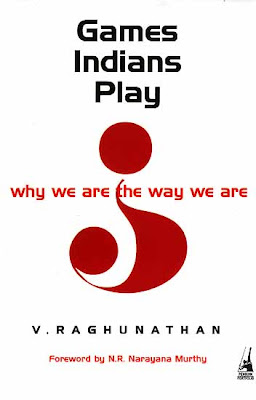Reflections on Innovation
Even though the word ‘Innovation’ sounds very flashy, it’s very difficult to innovate in Indian software companies because of the following reasons:
- Most of the projects we get to do in India are more of maintenance and enhancement type. Since the technology is already matured, there is little room to innovate.
- Since most of the companies are operating in the ‘offshore’ model, engineers are completely kept away from customers. We don’t get to see how exactly the customer is going to use a particular product or service. This also means that we don’t understand customer problems.
- Because of the nature of the work we do, the ‘technical career path’ concept is really not taken off in India. Even though all companies are advertising that they provide technical path, many of the senior techies are moved to techno-business kind of role or people managers as they are becoming overheads to organizations today. I might sound rude but that’s the reality. In the part five years I have never seen a technical expert who can design a complete product.
- Our education system doesn’t promote ‘learning-by-doing’ and most of us end up mugging up things rather than a hands-on approach.
- In India there is no proper industry-academia relationship. Computer science professors keep teaching the same old syllabus with their ‘ego’ on their shoulders and Industry people never bother to make a trip to colleges and giving them industry exposure. Except for IIITs I haven’t seen any other educational institutions actively tied up with the industry.
Cribs apart, let me put some serious thought. According to me innovation can be classified as ‘fundamental’ and ‘problem oriented’. The best example for the fundamental innovation is Boolean algebra. Bool invented this algebra in 18th century but no body thought about its real impact till digital electronics was invented couple of centuries later. Today Boolean algebra (manipulation of 1s and 0s) is the blood of ‘binary computing’. So by nature fundamental innovations are very different and it takes very long time feel the impact.
The ‘problem oriented’ innovation can be best explained with ‘lateral thinking’. In my blog about ‘Lateral thinking’, I have mentioned how an accident caused the invention of thermal inkjet. From the industry perspective this ‘problem oriented’ innovation is the way to go and the same method needs to be applied for innovating from India. I would say innovation is all about finding a customer problem and finding out a solution. These two phases are explained below:
The first phase is all about identifying the problem and validating it. This is also the most difficult phase, which answers the following ‘Why?’ questions.
1. Why this is a problem?
2.Why it is important to solve the problem for my organization?
In fact if the proper problem is identified 50% of the task is over. In the software world, the problem can be identified from the User Interface (UI) to the hardware resister value and every problem has equal value. After identifying the problem it needs to answer a simple question ‘Does this problem makes business sense?’ and this is where the subjective and objective aspects come in. It’s extremely important to validate the problem in a ‘subjective’ fashion rather than objectively. If the problem doesn’t make business sense from the organization’s point of view, it doesn’t make sense to proceed. In fact it’s always better to focus on the problem area that is related to the work or technology or domain we work with.
The second phase is more about solution design and implementation. To put in other words, it answers the following ‘How’ and ‘What’ questions.
- How am I going to solve the problem?
- How well my solution is going to address the problem statement?
- How can I reuse the existing pieces of software?
- What are the technologies or software components that are required?
- What is the solution design?
This is the phase where the ‘engineering’ aspects of the solution need to be decided. Once it is decided the solution implementation follows the typical design, coding and testing cycles. The above mentioned phases are totally different in nature. This is because in the first phase we use the ‘right’ side of the brain (intuitive part) and in the second part the ‘left’ side (analytical part). The first phase is ‘chaotic’ thinking; second phase is ‘organized’ thinking. In a way I can say innovation is nothing but an ‘organized chaos’.
I have been going through this ‘innovation’ journey for the past one year and it’s been very interesting. I am very much in the initial learning phase but I am enjoying every moment of it. If Dr. APJ Abdul Kalaam and Dr.Varghese Kurian can achieve 'innovation' in defence and milk production areas, the post-reform IT industry people don't have any excuses for not doing innovation. All it takes is passion, purpose and a strong urge to see a meaning for life.
Tags: Innovation,Solution approach

Comments